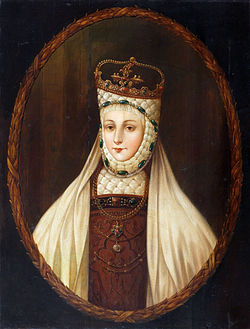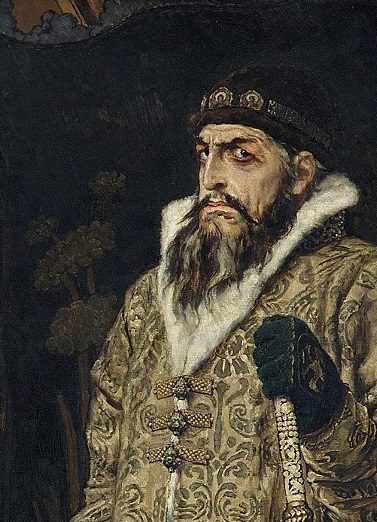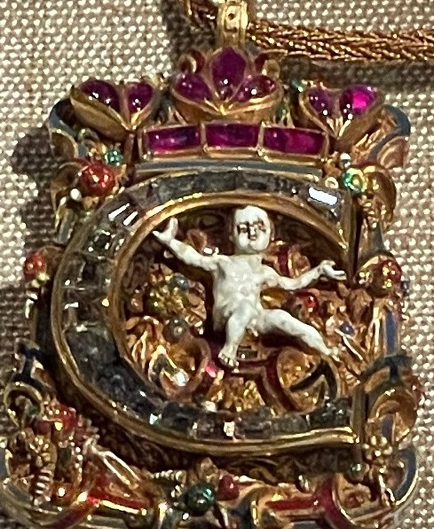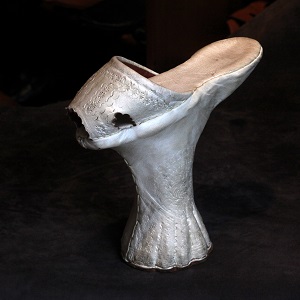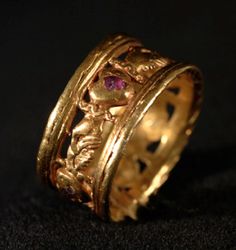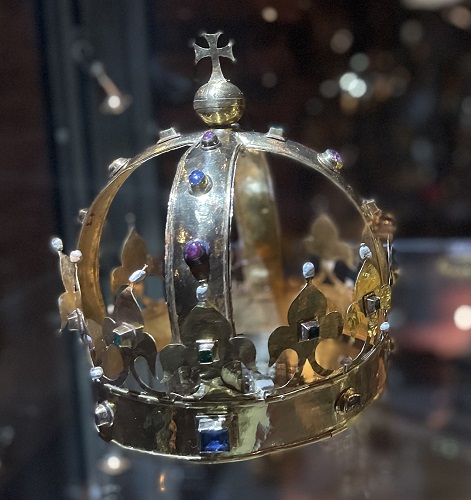hidden

"Why hasn't anyone done this before?" After all, she is a diamond in our history," wonders journalist Ilona Skujaitė, in 2023. having presented the historical novel "War Bride" at the beginning.
Laisvë Radzevičienė
Source: 15min
The story of Queen Catherine, pulled from the shadows of oblivion, also impressed the readers - the first edition of the book has already been sold, and the second is being published. Yesterday, the book was presented in Vilnius, at the Museum of Applied Art and Design. I. Skujaitė, the author of the book "War Bride", says that her goal was to return Kotrynas Jogailaitė to the historical memory of Lithuania. The highly popular historical novel is the journalist's first attempt at writing fiction.
She says that the search for facts and sources reminded her of a detective, because the history of the queen is like a broken necklace of pearls, its beads scattered across four countries - Poland, Lithuania, Finland and Sweden. The author of the book spent five years researching the topic of Kotryna Jogailaitė, before that she read various books about the 16th century for a couple of years to better understand the context.
- Why - Queen Catherine? Where did you first hear about this personality?
- First of all, I was intrigued by the portrait of the queen, which was painted by Lukas Cranach the Younger about 500 years ago. Looking at the image of Kotryna Jogailaitė, I couldn't believe it: isn't this scary girl with doe eyes and a black dress the future queen of Sweden? I am even surprised that I know almost nothing about this extraordinary woman from the so-called golden age of the Grand Duchy of Lithuania. That's how the end of the thread got into my hands, which I never let go. From the 16th century chronicles, letters, fragments of documents and the research of historians in Lithuanian, Polish, Russian, English, Swedish languages, the most important life events of the main heroes of the book - Kotryna Jogailaitė and her husband Jonas Vaza - were compiled. They have defined a story line that is reminiscent of a Hollywood adventure thriller, a fierce "Game of Thrones" and a shocking melodrama all at once. But the most important thing is that this is an absolutely true story written in the stars when the people mentioned in the book came into the world.
- What qualities of Katryna impressed you the most?
- Although at first Queen Catherine seemed to me like a timid doe, later it became clear what a woman of extraordinary spiritual strength she was. Kotryna Jogailaitė reminds me of a mysterious cat with nine lives, or a snake that, after emerging from its old skin, becomes even more beautiful. Although Queen Catherine was young and beautiful, in her time almost the most desirable bride in Europe, many influential men sought her hand, such as the Duke of Prussia, Tsar Ivan the Terrible, the Prince of Sweden, St. The son of the emperor of the Roman Empire, she never married for almost 20 years. As if under a spell.
The changes started when her life went to the other side, the jaw drops when reading only the dry facts of Kotryna Jogailaitė's life. Almost 500 years after her birth, I feel great pride in this woman from the family of the rulers of Lithuania and Poland, in whose veins flowed the Lithuanian blood of the Gediminai dynasty.
Ilona Skujaitė is the author of the historical novel "The War Bride".
- What is the relationship between fantasy and reality in your book?
- The book presents a literary portrait of Kotryna Jogailaitė, the skeletons of which are historical facts, and the body is wisdom, modeled dialogues, monologues, retellings of well-known historical events. I carefully tried to put the plot together according to real events - where the queen lived, who proposed to her, how she was persecuted by Tsar Ivan the Terrible, her courtship and marriage history, her imprisonment and bumpy road to the throne of the Queen of Sweden. However, we are still talking about a history that is almost 500 years old, when the sources are not very abundant, but the genre of the historical novel allows us to model what real historical persons could feel, speak and think at the difficult life turning points recorded in historical sources.
- Kotryna was considered a hopeless old maid in those days, she married Jonas Vaza, 36 years old. By the way, the groom was only twenty-five. Why didn't the marriage happen earlier? Did you find an explanation in historical sources or did you use your imagination?
- Historical sources clearly indicate who and when courted Queen Catherine and why it was always unsuccessful. You will find all the answers in the novel. When reading the works of various historians about Kotryna Jogailaitė's family, one can conclude that her mother, Queen Bona, was not very active in looking for grooms for all three of her youngest daughters. When Bonna went to live in Italy, this duty fell to Žygimantus Augustus, who was also quite lax in this matter until the Livonian War with Moscow broke out on the shores of the Baltic Sea. The tenacious Duke of Finland and Prince of Sweden Jonas Vaza, who appeared then, is somewhat reminiscent of the overseas prince from the fairy tale who saved the bewitched unfortunate queen. The paradox is that Queen Catherine, instead of fainting from happiness, according to contemporaries' testimony, told her brother Žygimantas Augustus that she did not want to marry the prince at all. So it wasn't so easy for the groom of dreams to take the old girl with her hair cut as his wife. The novel is called "War Bride" for a reason. Although you won't find many descriptions of battle scenes in the novel, the war is very important in this book because it highlights Kotryna Jogailaitė's personality. It is war, as we can see now in the case of Ukraine, that clearly shows who is a scoundrel, an accomplice, a traitor or a hero. It is simply incredible how in this bloody meat grinder of war and politics of the 16th century, Catherine managed to not only survive, but also rise to the rank of queen, calmly, without major dramas and with feminine cunning.
Dancers of the Banchetto Musicale Ensemble
- How important is love in this story? What did love even mean in those days?
- From a formal point of view, love meant nothing, no one married for love at that time. However, I would think that even then people dreamed of young, beautiful spouses with whom they would have a close relationship. For example, the relationship between Catherine's father-in-law, King Gustav Vasa of Sweden, and his second wife, Margareta, was called love, because the queen was almost constantly pregnant, gave birth to 10 children, and no one in the palace had heard that the king was running after other skirts. So love after marriage existed for those lucky enough to experience it, but love marriages were an anomaly. From a formal point of view, love meant nothing, no one married for love at that time. We are well aware of the love story of Žygimantas Augustus and Barbora Radvilaitė, which ended in marriage, and what a shock it caused to Augustus' parents, as well as to the Polish society of that time - the king allowed himself to marry out of love, spitting on political-dynastic calculations. King Erik XIV of Sweden, the heir of Gustav Vaza and the brother-in-law of Kotryna Jogailaitė, did the same, marrying his concubine and the mother of his children, Karina, who came from a poor family.
- The newlyweds' trip to the husband's homeland, to Finland, is a complete thriller in today's eyes. Looks like you managed to keep the suspense in your book too…
- This novel is specially designed to be similar to rafting down a fast-flowing mountain stream or rafting, when you don't know what's waiting around the next bend, and sometimes you're afraid that now you're really going to fall off and twist your neck. By the way, this form of narration, based on action, was dictated by the story itself. It is really hard to believe that this is not a fantasy, but that so many transformations, sharp turns of fate and strong shocks fit into just one life of Kotryna Jogailaitė.
I. Skujaitė and Luka Lesauakaitė during the presentation of the book at the Museum of Applied Art and Design in Vilnius.
- Do you have any explanation why Katryna's story was not publicized as much as her brother Žygimantas Augustus'? Do you think that the fact that Catherine was a woman played a part in this?
- We are talking about pre-modern, 16th century society, when women did not have any political rights and were dependent. These were the times when the country and women were ruled by men, the chronicles of that time were also written by men, so women remained in the background, because the most important task of women back then, whether you were a peasant or a queen, was to give birth to children.
Žygymantas Augustas and Barbora Radvilaitė were our own - they lived their whole lives in the Grand Duchy of Lithuania and Poland. And the marriage of Katryna and John was normal, despite the strange age difference, because already at that time it was more common for older men to marry young girls, and not the other way around. Also, when they both went to Sweden, not much was interested in how they were doing. There were far more important local matters.
- You said that the story of Kotryna Jogailaitė could also inspire people today, because the queen went through the same life difficulties that we are facing. So the period has no effect on people's experiences and feelings?
- Before becoming the queen, Catherine went through a long path full of challenges and internal transformations, so her story still inspires the courage to be herself, to find inner strength in herself and to accept changes calmly, trusting her intuition. While writing the book, I became convinced that over the centuries, only people's clothes and toys - weapons, jewelry and other things - change, but the essential values, the challenges of self-realization and the secrets of the eternal meaning of life remain the same. The story of Queen Catherine inspires not to lose hope and self-belief in the darkest moments of life, to find strength every time and stand on your feet. Her story will be relatable if you have ever felt less loved by your parents than a brother or sister, faced painful betrayals and losses, had to adjust in a foreign country, or when life has turned upside down, you have already thought that nothing good will happen, you are too old or too old , no longer beautiful or no longer beautiful, no one is interested or interested.
- How long did you write the book? Who were the first readers? How did you decide to show the book to the publisher?
- I wrote the book for almost five years, two years before that I carried it in my head. The process took a long time, because I was able to engage in this creative adventure only after finding time after my direct work. This historical novel became a way out of my comfort zone, as it is now fashionable to say. I transitioned from a normal journalistic style to a literary one, and it was not an easy process.
There were days when I didn't even want to look in that direction anymore, when I got rid of the novel forever. However, this story did not let me go, the sad eyes of Queen Catherine from Cranach's painting kept popping up in front of my eyes, and then my conscience began to gnaw that she was able to overcome much greater challenges, and I, living warmly and comfortably in the 21st century, cannot simply write about her. Thus, Queen Catherine's personal story inspired me to pursue my goal and not to give up when creative "suffering" struck. In the process of creation, I initially pricked the ears of my close circle, but at some point I felt that speeches and consultations were enough. The publishing house believed in my manuscript from the first sentence, I received the offer to publish the book immediately.
- Are you writing something now? And what do you do when you're not writing?
- I'm not writing anything yet, because I haven't said everything about Kotryna Jogailaitė yet. I've collected a lot of material over the years, so I want to tell its story in as many ways as possible. I have initiated another project - together with the director and moderator of self-development practices Gitana Platkyte-Grigiene, we will create a documentary film about Kotryna. It will not be an ordinary restorative historical documentary, but a film whose protagonists are today's people who are looking for new insights on how to improve and realize their personality. In the film, the connection between Catherine and current people will be created by historians and self-development specialists. Together with Doctor of History Rasa Leonavičiūte-Gecevičiene, we will present more interesting facts about the famous family of Kotryna Jogailaitė that did not fit into the book, and we will discuss interesting topics of the golden age of the LDK on the website dedicated to Kotryna. I've noticed that readers of my novel have a lot of questions about the Renaissance, like why men humiliated women in those days or why they didn't bury the dead for so long. We will be waiting for more questions on the website.
Posted on 2023-11-05


